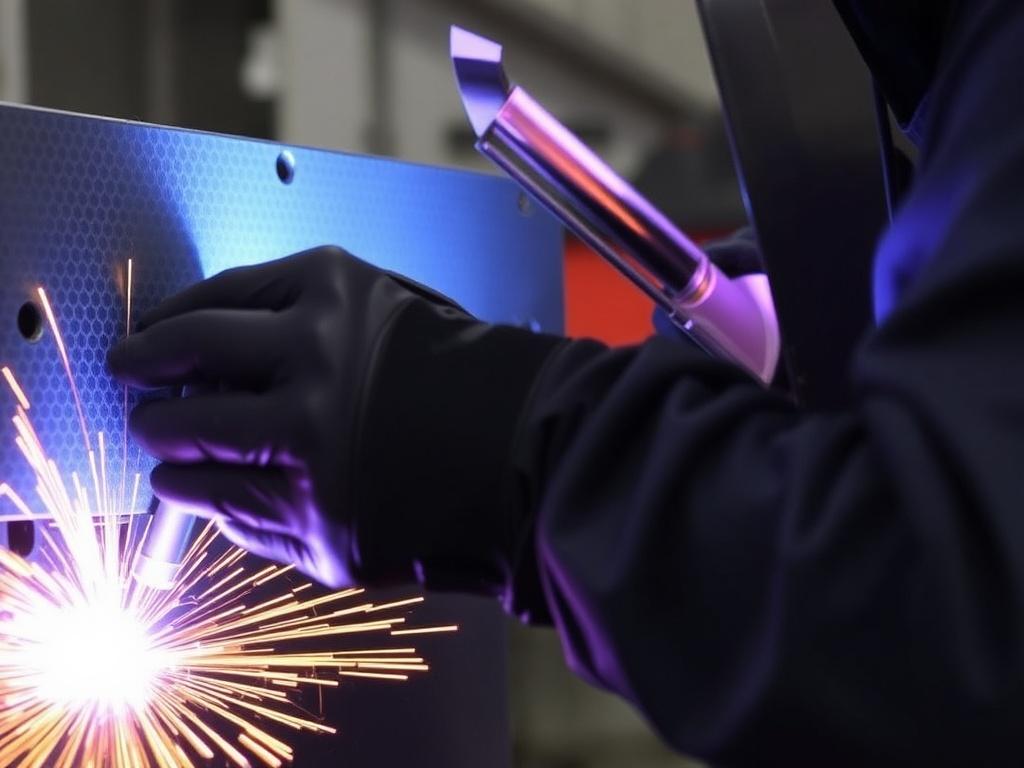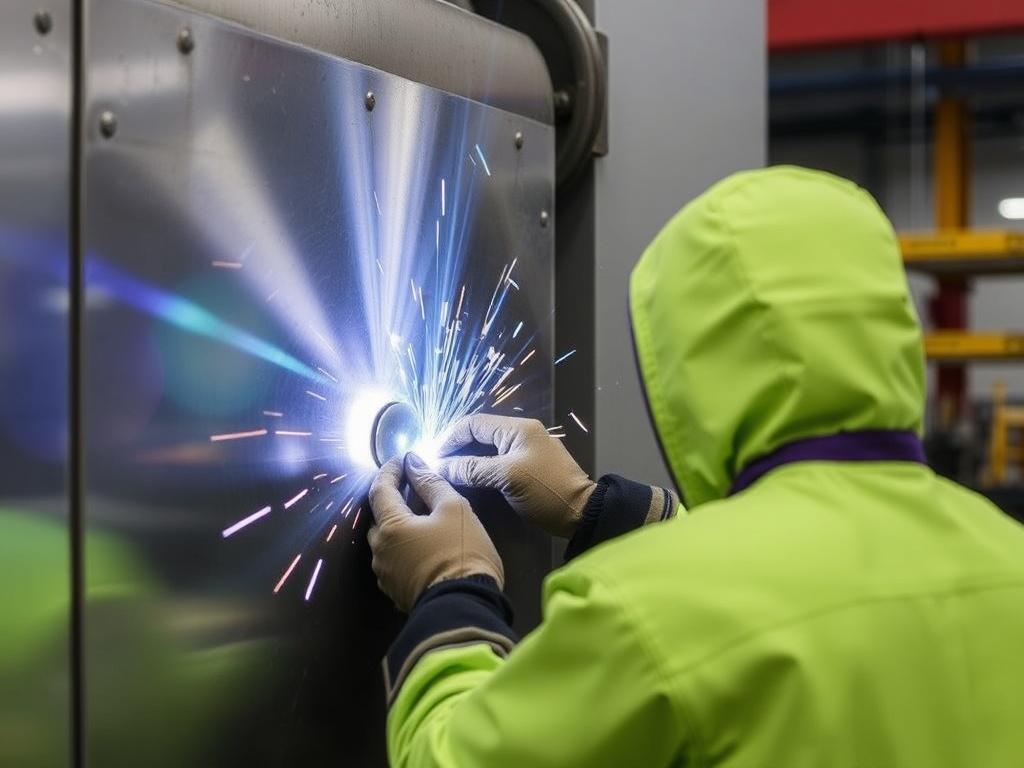
When it comes to ensuring the strength, reliability, and safety of welded structures, one technique stands out as indispensable: Non-Destructive Testing (NDT) for welding inspections. Whether it’s a towering bridge, a high-pressure pipeline, or a critical aerospace component, the integrity of welds can make the difference between safe operation and catastrophic failure. So, how do engineers and inspectors verify weld quality without damaging the components themselves? That’s where NDT comes into play. This comprehensive article dives deep into the world of Non-Destructive Testing, exploring its methods, benefits, and applications in welding inspections.
Understanding Non-Destructive Testing (NDT)
At its core, Non-Destructive Testing refers to a variety of analysis and inspection techniques used to evaluate the properties of a material, component, or assembly without causing any harm. Unlike destructive testing, which can involve breaking, cutting, or otherwise rendering a sample unusable, NDT allows for thorough examination while preserving the original part for service. This is particularly vital for welded assemblies, where the goal is to find defects like cracks, porosity, incomplete fusion, or corrosion without compromising the structure.
NDT has become an essential tool in industries such as oil and gas, aerospace, construction, automotive, and manufacturing. It provides the assurance that welds meet quality and safety standards, often catching issues before they become problems. By integrating NDT into welding inspections, companies can reduce failure risks, avoid costly repairs, and comply with rigorous regulatory requirements.
The Importance of Welding Inspections
Welding is a complex process, and even small imperfections can seriously affect the performance of a welded joint. Welding inspections help verify that the welds are free of defects which could weaken the structure or lead to leaks, breaks, or catastrophic failure. Proper inspections not only protect human lives but also prevent environmental disasters and financial losses.
For structural components subjected to extreme conditions like pressure, tension, or varying temperatures, a tiny crack or flaw can propagate quickly under stress. Early detection is crucial. That’s why welding inspections though Non-Destructive Testing techniques are integrated throughout the manufacturing, maintenance, and operation phases of many critical assets.
Common Non-Destructive Testing Methods Used in Welding Inspections

There is no one-size-fits-all approach when it comes to NDT, especially for weld inspections. The choice of method depends on factors such as material type, weld size and geometry, defect types to look for, and accessibility. Below, we explore the most widely used NDT techniques in welding inspections with their operating principles and applications.
1. Visual Inspection (VI)
Visual Inspection is often the first step in any welding inspection process. It involves looking closely at the welds with the naked eye or magnification aids to detect surface irregularities. Despite being the simplest method, it’s crucial for spotting surface cracks, undercutting, porosity, and other apparent defects.
Inspectors sometimes use tools like borescopes, cameras, or handheld mirrors to view difficult-to-reach areas. Lighting and surface cleanliness can significantly affect the effectiveness of visual inspections. Though it cannot detect subsurface flaws, visual inspection serves as a vital quality control step to catch basic anomalies early.
2. Liquid Penetrant Testing (LPT)
Liquid Penetrant Testing involves applying a liquid dye (usually fluorescent or colored) onto the weld surface. The dye seeps into open surface defects such as cracks or pores through capillary action. After a specified dwell time, excess dye is removed, and a developer is applied which draws the penetrant out of the flaws, making them visible.
This method is quick, relatively inexpensive, and highly sensitive to surface-breaking defects. However, it cannot detect internal flaws and requires a clean, non-porous surface for accurate results. It’s commonly used for welds on non-porous metals, ceramics, and plastics in industries like automotive and aerospace.
3. Magnetic Particle Testing (MPT)
Magnetic Particle Testing uses the principle of magnetic flux leakage to find cracks and other surface or near-surface discontinuities in ferromagnetic materials such as steel. By magnetizing the welded part and sprinkling fine magnetic particles (dry or wet), the particles gather around flaw edges where the magnetic field leaks, creating a visible indication.
MPT is fast and effective but limited to ferromagnetic materials. It is widely used for inspecting pipeline welds, pressure vessels, and automotive parts. Proper surface preparation and skilled inspectors are necessary to avoid false indications.
4. Ultrasonic Testing (UT)
Ultrasonic Testing is one of the most powerful NDT methods for weld inspections. It uses high-frequency sound waves transmitted into the material. When these waves encounter a defect or boundary, part of the energy reflects back and is detected by a receiver. Inspectors interpret these reflections to pinpoint flaw locations and sizes.
UT can detect both surface and internal defects with great accuracy. It’s capable of depth measurement and thickness gauging, making it versatile for varied weld geometries. Advanced ultrasonic techniques include phased array and time-of-flight diffraction (TOFD) which provide detailed imaging and enhanced defect characterization. While UT requires trained operators and calibration, it remains a staple in critical weld inspections.
5. Radiographic Testing (RT)
Radiographic Testing involves the use of X-rays or gamma rays to penetrate the weld material. The rays strike a film or digital detector on the opposite side, creating an image that reveals internal defects like cracks, voids, inclusions, or lack of fusion. RT is akin to taking a “weld X-ray” for internal flaw assessment.
Since it can detect volumetric and planar defects, RT is valuable for highly critical welds. However, safety precautions for radiation exposure, equipment costs, and preparation time are considerations. Today, digital radiography enhancements allow for faster inspection and better image analysis.
6. Eddy Current Testing (ECT)
Eddy Current Testing uses electromagnetic induction to detect flaws in conductive materials. By inducing eddy currents in the test material with an alternating magnetic field, changes caused by defects alter the current flow and are registered by sensors. This method is sensitive to surface and near-surface defects and can be applied to tubes, wires, and thin materials.
ECT is fast, portable, and doesn’t require couplants but is limited to electrically conductive materials. It finds application in aircraft weld repairs, heat exchanger tube inspections, and detecting surface cracks in weld toe areas.
Advantages of Using NDT for Welding Inspections
The benefits of Non-Destructive Testing for weld inspections are numerous, shaping why it remains the cornerstone of quality control in welding. Here are some of its key advantages:
- Preserves Weld Integrity: NDT methods don’t damage or alter the weld, allowing components to remain in service after inspection.
- Early Detection of Flaws: Allows for correction before defects develop into failures, enhancing safety and reliability.
- Cost-Effective: Prevents expensive repairs or replacements by catching defects early, reduces downtime, and minimizes liability.
- Regulatory Compliance: Meets industry standards and codes (such as ASME, AWS, ISO) which often mandate NDT inspections for critical welds.
- Versatile Application: Applicable across numerous industries and materials with a range of methods suited to different needs.
- Supports Lifecycle Management: NDT helps monitor weld conditions over time, facilitating predictive maintenance and longer asset life.
Standards and Codes Governing NDT in Welding Inspections
To ensure consistency and reliability, Non-Destructive Testing for welding inspections operates under stringent standards and codes developed by industry bodies. Adhering to these helps maintain quality and safety in critical applications.
| Organization | Standard/Code | Description |
|---|---|---|
| American Society of Mechanical Engineers (ASME) | ASME Section V | Code for Nondestructive Examination of materials, detailing methods and acceptance criteria. |
| American Welding Society (AWS) | AWS QC7 | Standard for visual examination of welds and qualification of welding inspectors. |
| International Organization for Standardization (ISO) | ISO 9712 | Qualification and certification of NDT personnel to ensure competent inspection. |
| American Petroleum Institute (API) | API 1104 | Welding of pipelines and related facilities, including NDT requirements. |
| European Committee for Standardization (CEN) | EN 473 | Certification of NDT personnel aligned with ISO 9712. |
Following these standards ensures not only reliable detection of weld defects but also consistent reporting and documentation, which are crucial for audits and legal compliance.
Challenges and Limitations of NDT in Welding Inspections
While NDT offers immense advantages, it is not without challenges and limitations. Understanding these helps to select the right techniques and manage expectations effectively.
Operator Skill and Training
Many NDT methods require highly trained and certified inspectors. Incorrect interpretation of results can lead to missed defects or false positives. Maintaining qualified personnel, continual training, and certification is mandatory for trustworthy inspections.
Access and Geometry Restrictions
Complex weld geometries, confined spaces, or surface obstructions might impede the proper use of some NDT tools. For example, certain ultrasonic or radiographic probes require direct contact or line-of-sight access.
Material and Application Limitations
Not all materials respond equally to every NDT method. For instance, Magnetic Particle Testing only works on ferromagnetic materials, while Eddy Current Testing is limited to conductive materials. Also, thick or layered welds may pose difficulties in signal penetration.
Surface Preparation Needs
Methods like Liquid Penetrant Testing require clean, dry, and smooth surfaces. Contaminants or roughness can mask flaws or create false indications. Surface prep can add time and cost to the inspection process.
Cost and Equipment Considerations
Some advanced NDT techniques (advanced UT, digital radiography) require expensive equipment and software. Although they provide excellent information, budget constraints might limit their use in some projects.
Emerging Trends and Technologies in Welding NDT

Continuous research and technological advancements are enhancing the capabilities and applications of Non-Destructive Testing for welding inspections. Some exciting trends include:
- Phased Array Ultrasonic Testing (PAUT): Uses multiple element probes to steer and focus sound beams electronically, offering high-resolution images and better defect characterization.
- Time-of-Flight Diffraction (TOFD): A sophisticated ultrasonic technique that accurately sizes defects by measuring the diffraction of sound waves.
- Digital Radiography (DR): Replaces traditional film with digital detectors, allowing immediate image review, enhanced analysis, and storage.
- Automated and Robotic Inspections: Robots and drones equipped with NDT sensors can inspect welds in hazardous or hard-to-reach locations safely and efficiently.
- Artificial Intelligence (AI) and Machine Learning: AI algorithms assist in interpreting complex inspection data, reducing human error and speeding up defect detection.
- Multi-Modal NDT Approaches: Combining different NDT methods to provide complementary information, leading to more comprehensive weld evaluations.
Best Practices for Successful NDT Welding Inspections

Ensuring accurate and reliable welding inspections through NDT requires more than just equipment. Here are some best practices to follow:
- Proper Procedure Selection: Choose NDT methods based on material type, weld configuration, defect types, and project requirements.
- Qualified Personnel: Employ certified NDT technicians and inspectors with appropriate skill levels and continuous training.
- Pre-Inspection Preparation: Clean, prepare, and document the weld surfaces before testing for clear results.
- Calibrated Equipment: Regularly maintain and calibrate inspection instruments to ensure precision.
- Comprehensive Documentation: Record all inspection data, techniques used, findings, and reports for traceability and audits.
- Integrate Multiple Techniques: Utilize more than one NDT method where necessary to cross-validate findings.
- Follow Industry Standards: Adhere rigorously to codes and protocols to maintain consistency and acceptance.
Summary: The Critical Role of NDT in Welding Inspections
Non-Destructive Testing has revolutionized how engineers and inspectors ensure the safety, quality, and longevity of welded structures. With a wide array of techniques available—from visual inspection and liquid penetrant to advanced ultrasonic and radiographic methods—NDT provides the tools needed to detect flaws early and comprehensively without compromising the part’s integrity.
Incorporating NDT into your welding inspection regime means better protection against failures, lower maintenance costs, regulatory compliance, and above all, the safety of people and the environment. As technology advances, the future of NDT promises even greater precision and efficiency, making it an essential part of modern welding quality assurance.
Whether you are a welding engineer, quality control technician, or student interested in materials testing, understanding Non-Destructive Testing for welding inspections equips you with knowledge critical to maintaining the structures and machinery that power our world.
